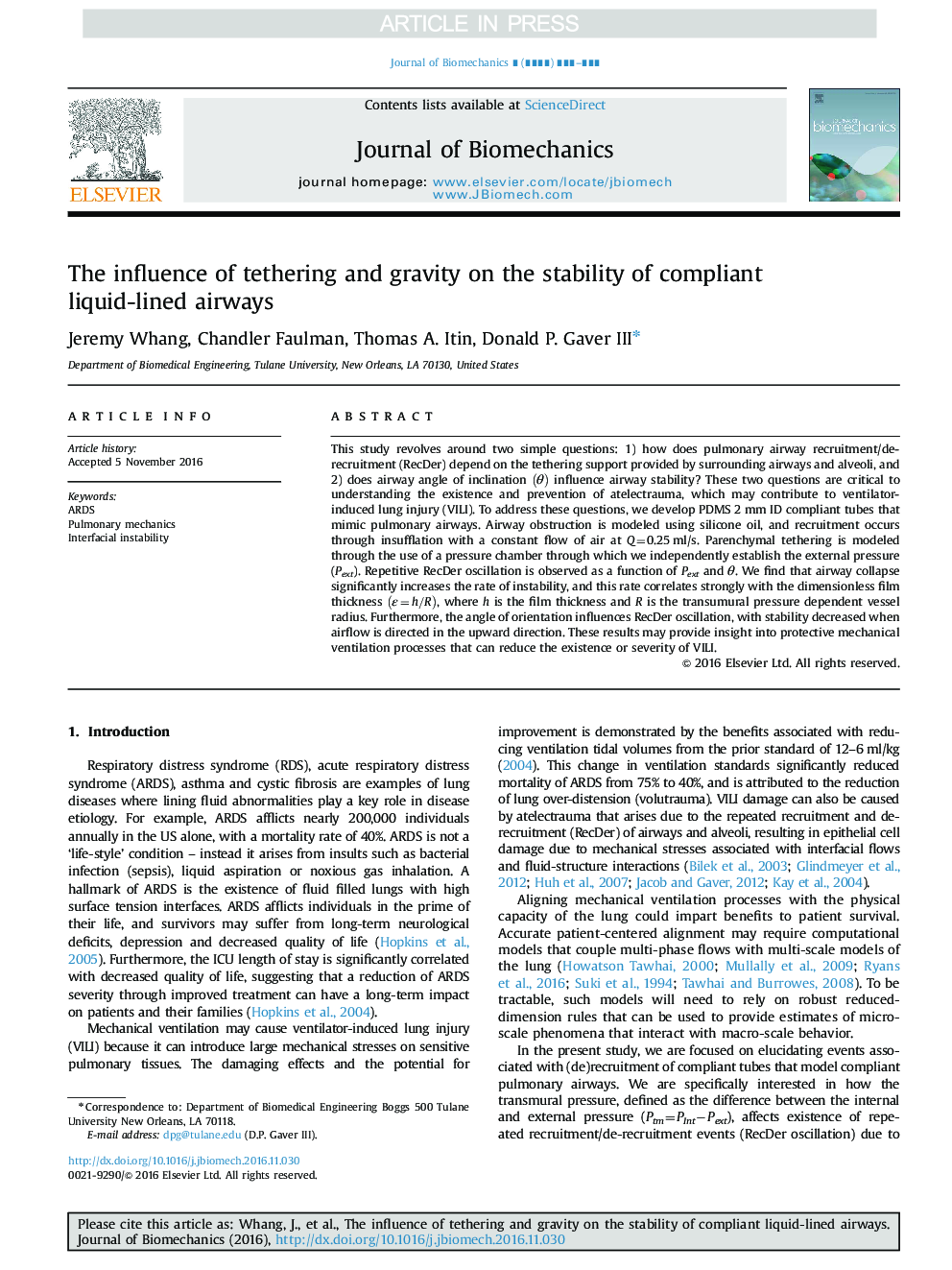| Article ID | Journal | Published Year | Pages | File Type |
|---|---|---|---|---|
| 5032154 | Journal of Biomechanics | 2017 | 6 Pages |
Abstract
This study revolves around two simple questions: 1) how does pulmonary airway recruitment/de-recruitment (RecDer) depend on the tethering support provided by surrounding airways and alveoli, and 2) does airway angle of inclination (θ) influence airway stability? These two questions are critical to understanding the existence and prevention of atelectrauma, which may contribute to ventilator-induced lung injury (VILI). To address these questions, we develop PDMS 2 mm ID compliant tubes that mimic pulmonary airways. Airway obstruction is modeled using silicone oil, and recruitment occurs through insufflation with a constant flow of air at Q=0.25 ml/s. Parenchymal tethering is modeled through the use of a pressure chamber through which we independently establish the external pressure (Pext). Repetitive RecDer oscillation is observed as a function of Pext and θ. We find that airway collapse significantly increases the rate of instability, and this rate correlates strongly with the dimensionless film thickness (ε=h/R), where h is the film thickness and R is the transumural pressure dependent vessel radius. Furthermore, the angle of orientation influences RecDer oscillation, with stability decreased when airflow is directed in the upward direction. These results may provide insight into protective mechanical ventilation processes that can reduce the existence or severity of VILI.
Related Topics
Physical Sciences and Engineering
Engineering
Biomedical Engineering
Authors
Jeremy Whang, Chandler Faulman, Thomas A. Itin, Donald P. III,
